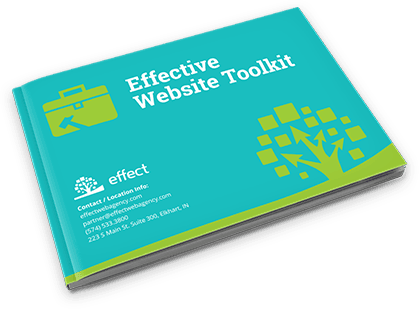Meta descriptions are a great tool for boosting organic traffic on your site. These snippets of information help expound on your site page during Google search results. Although meta descriptions don’t directly impact SEO rankings, they do play a vital role in increasing your click-through rate (CTR), which in turn can lead to more traffic, more leads, and ultimately, more customers. That’s why it’s essential to understand how to craft compelling, relevant, and optimized meta descriptions. Read on to learn how to write the perfect meta description.
What is a meta description?
A meta description is a short HTML attribute summarizing a webpage’s content. It typically appears under the title tag in search engine results and serves as a page preview. They are not long, as they only allow up to 155 characters on a desktop or 120 characters on a mobile device. However, they should be informative and beneficial to the user.
Why Meta Descriptions Still Matter for SEO
Let’s address the common misconception: meta descriptions don’t directly influence your page’s ranking on Google. True, but their indirect influence is powerful.
Here’s how:
- Higher CTR = better performance: The more people click on your listing, the more traffic you get—and higher CTRs can indirectly contribute to better rankings over time.
- Relevant content = improved user engagement: A compelling description helps users quickly decide whether your content is right for them, reducing bounce rates and improving time-on-site.
- Brand credibility: Consistent, professional, and value-driven meta descriptions help establish your business as trustworthy and relevant in search results.
Even though Google rewrites meta descriptions about 69% of the time, your efforts are far from wasted. Having one in place increases your chances of showing the right message when it counts.
Given how beneficial these descriptions can be, it’s important to know how to write them effectively.
How to Write The Perfect Meta Description
Now that you understand the value of meta descriptions, here are some practical tips to help you write the perfect one.
1. Match the Title Tag
Look at your title tag and let that determine what your description is about. If your title tag is about dog grooming, don’t write a meta description about cat food.
2. Focus on Search Intent
Think about why someone is searching and what problem they’re trying to solve. Are they looking for a service, a guide, or pricing information? Include that information in your meta description to convince readers your page is exactly what they’re looking for.
3. Use Active Voice and Action-Oriented Language
Don’t be passive—encourage action. Phrases like “Discover,” “Get,” “Boost,” or “Find out how” connect better with searchers and prompt engagement.
4. Keep It Concise
Be short and concise. Your description is not an article or blog post. It should be short and to the point. Only list the most important information, as that’s what will grab the attention of the searcher.
5. Include Target Keywords
While meta descriptions don’t affect rankings, keywords that match the user’s query will be bolded in the search results. This makes your listing stand out and reassures searchers they’re in the right place.
While meta descriptions may seem insignificant, they are a mighty tool when it comes to boosting traffic for your site. Utilize these processes to help increase your site visibility.
We Can Help!
Effect Web Agency partners with businesses to help them achieve the maximum results from their digital marketing efforts. Contact Effect today for your free web consultation.




